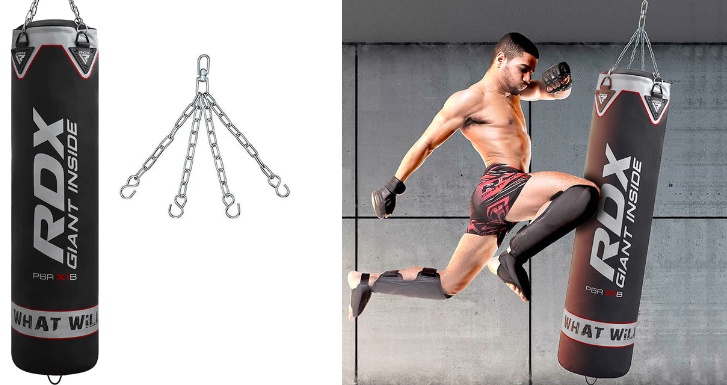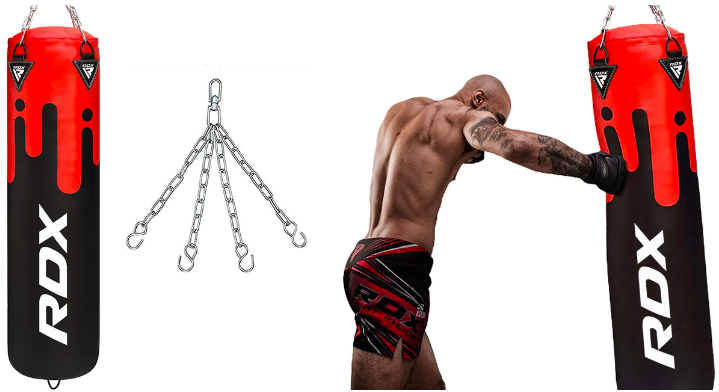Mixed Martial Arts (MMA) is a dynamic combat sport that requires a blend of striking, grappling, and ground fighting skills. To excel in MMA, athletes must train rigorously, focusing on various aspects of their game. One of the key elements of MMA training is striking, which includes punches, kicks, elbows, and knees. To enhance their striking abilities, MMA fighters often use punching bags as a fundamental training tool. These bags come in different types and sizes, each serving a specific purpose in training. In this comprehensive guide, we will delve into the world of MMA training punching bags, exploring their types, benefits, selection criteria, proper usage techniques, and maintenance tips.
Types of MMA Training Punching Bags
Heavy Bags
Heavy bags are large, cylindrical bags filled with dense materials such as sand, cloth, or synthetic fibers. They are designed to withstand powerful strikes and are ideal for developing striking power, strength, and endurance. Heavy bags are commonly used for practicing various strikes, including punches, kicks, elbows, and knees.
Speed Bags
Speed bags are small, air-filled bags attached to a rebound platform. They are used to improve hand-eye coordination, timing, and rhythm. Speed bags are typically used for practicing quick, repetitive punches and are excellent for developing speed and accuracy in striking.
Double-End Bags
Double-end bags are small, spherical bags suspended between two floor-to-ceiling elastic cords. They are used to improve timing, reflexes, and accuracy. Double-end bags require the fighter to hit them with precision, making them an excellent tool for developing striking accuracy and defensive skills.
Maize Bags
Maize bags are tear-shaped bags filled with maize, a type of grain. They are designed to improve head movement, bobbing, and weaving. Maize bags are smaller than heavy bags and require precise strikes, making them ideal for developing defensive skills and agility.
Benefits of Using MMA Training Punching Bags
Improves Technique
Punching bags are excellent tools for practicing and refining striking techniques. They allow fighters to work on their form, stance, and range of motion, helping them develop crisp, effective strikes.
Enhances Cardiovascular Fitness
Punching bags provide a high-intensity cardio workout, helping fighters improve their cardiovascular endurance and stamina. Bag work involves continuous movement and striking, which elevates heart rate and burns calories.
Builds Strength and Endurance
Repeatedly striking a punching bag helps build strength and endurance in the muscles used for striking. This includes the arms, shoulders, back, and core muscles. Over time, regular bag work can lead to increased muscle tone and strength.
Stress Relief and Mental Focus
Punching bags can serve as a form of stress relief, allowing fighters to release pent-up energy and frustration in a controlled environment. Additionally, focusing on the rhythm and timing of strikes can help improve mental focus and concentration.
How to Choose the Right MMA Training Punching Bags
Weight
The weight of the punching bag is an essential factor to consider. Heavy bags are typically heavier and provide more resistance, making them suitable for developing power and strength. Lighter bags are more suitable for speed and accuracy training.
Material
Punching bags are made from various materials, including leather, synthetic leather, canvas, and vinyl. Leather bags are durable but expensive, while synthetic bags are more affordable but less durable. Choose a material that suits your budget and training needs.
Size
The size of the punching bag depends on the type of training you intend to do. Larger bags are better for power and strength training, while smaller bags are more suitable for speed and accuracy training.
Hanging vs. Free-Standing Bags
Hanging bags are suspended from a ceiling or a stand and swing freely when struck. They provide a more realistic training experience but require a sturdy mounting system. Free-standing bags are supported by a base and do not require mounting, making them more convenient but less stable.
Proper Techniques for Using MMA Training Punching Bags
Hand Wrapping
Before using a punching bag, it is essential to wrap your hands to protect them from injury. Hand wraps provide support to the wrists and knuckles, reducing the risk of sprains and fractures.
Basic Strikes (Jab, Cross, Hook, Uppercut)
Practice the basic strikes on the punching bag, focusing on technique and form. Start slowly and gradually increase speed and power as you become more comfortable.
Kicks and Knees
Incorporate kicks and knees into your bag work to simulate real-life striking scenarios. Practice different types of kicks, including front kicks, roundhouse kicks, and side kicks, to improve your kicking technique and power.
Movement and Footwork
Use footwork to move around the bag and change angles. Practice circling the bag, moving in and out, and pivoting to simulate movement in a fight. Footwork is essential for maintaining distance, creating angles, and evading strikes.
Maintenance and Care of MMA Training Punching Bags
Cleaning and Disinfecting
Regularly clean and disinfect your punching bag to remove sweat, dirt, and bacteria. Use a mild detergent and water solution to clean the surface of the bag, and disinfect it with a disinfectant spray or wipes.
Checking for Wear and Tear
Inspect your punching bag regularly for signs of wear and tear, such as fraying seams, punctures, or leaks. Repair or replace any damaged parts to ensure the bag remains safe and effective to use.
Storing Properly
Store your punching bag in a dry, cool place away from direct sunlight and moisture. Hang it from a sturdy ceiling or stand to prevent it from sagging or deforming. Proper storage will help prolong the life of your punching bag.
Conclusion
MMA training punching bags are essential tools for enhancing striking skills, fitness, and overall performance in Mixed Martial Arts. By incorporating various types of punching bags into your training regimen and using proper techniques, you can improve your striking abilities, cardiovascular fitness, and mental focus. Remember to choose the right punching bag for your needs, maintain it properly, and practice consistently to reap the benefits of bag work.



No comments yet